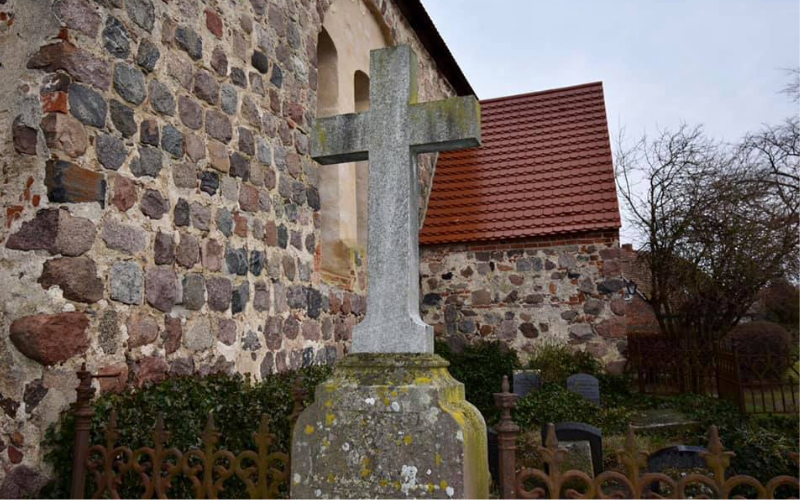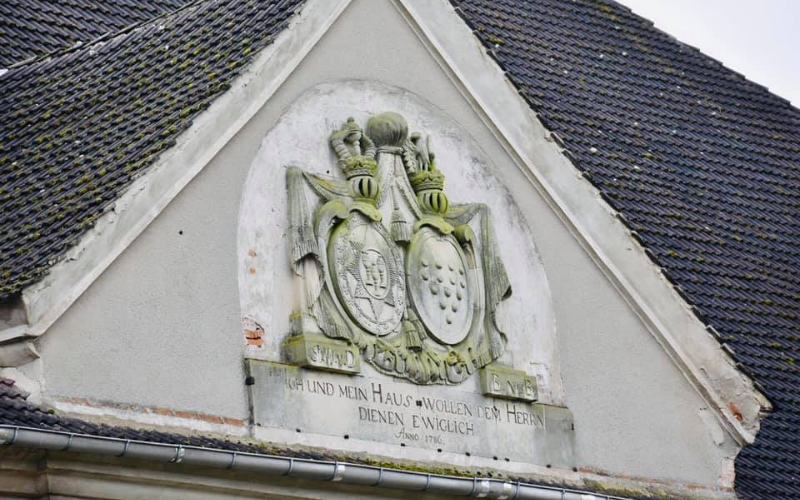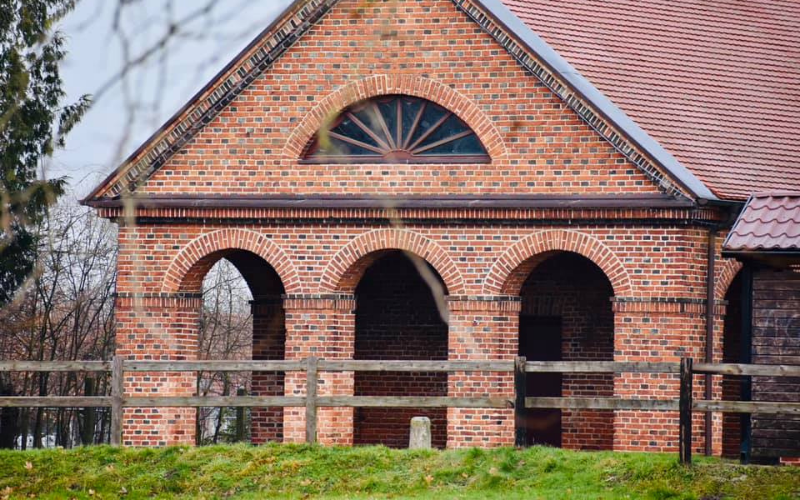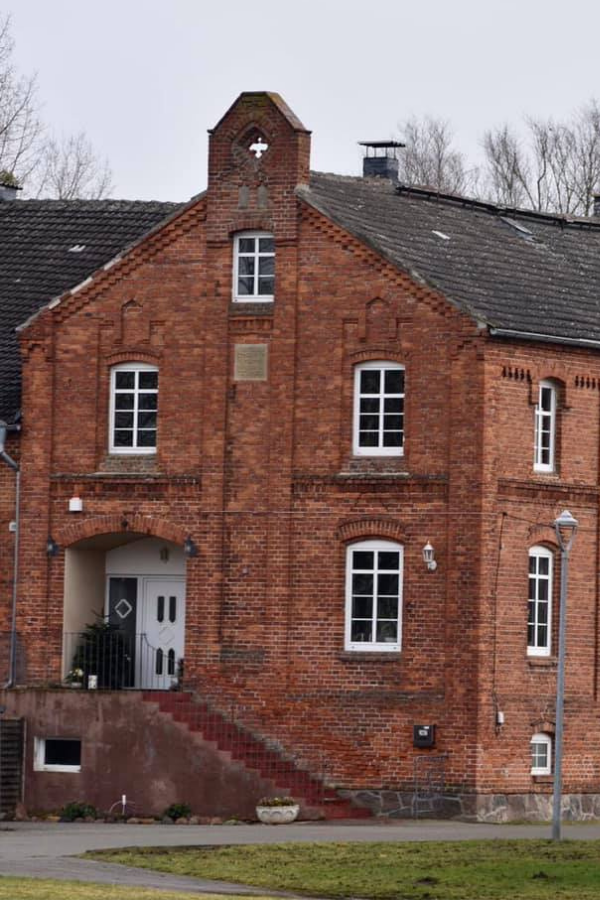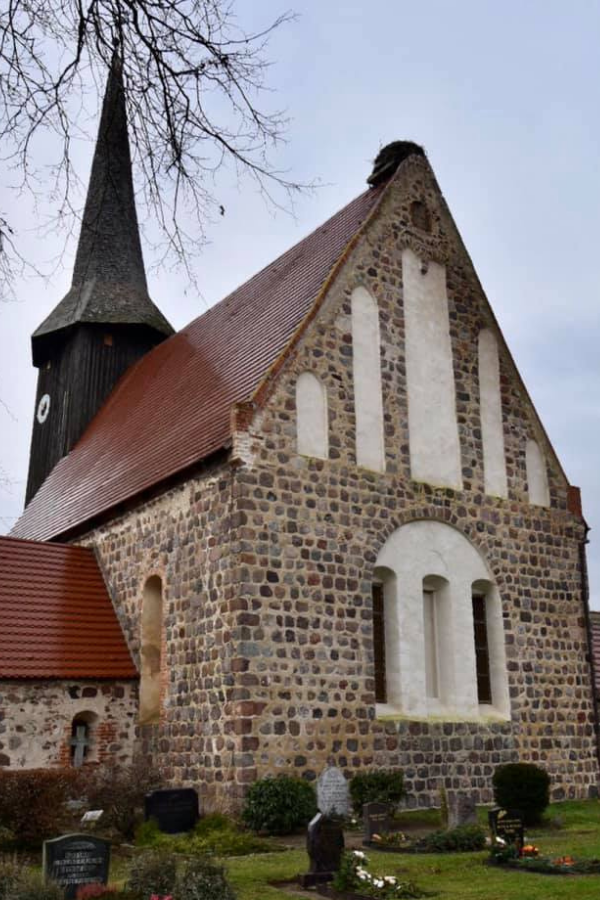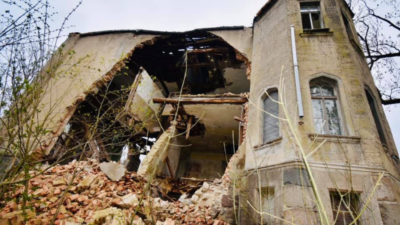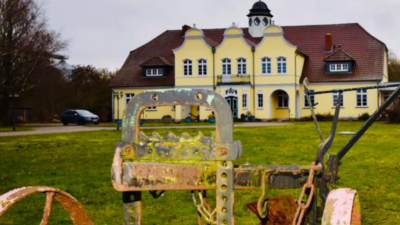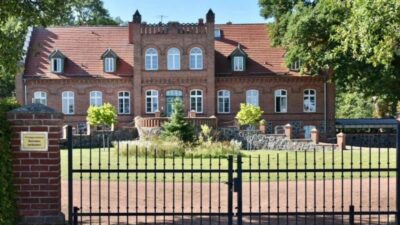Gutshaus Cölpin (Cölpin Hall)
The 8 hectare spanning park around the estate was designed by renowned Prussian garden artist Lenné.
Cölpin, Deutschland
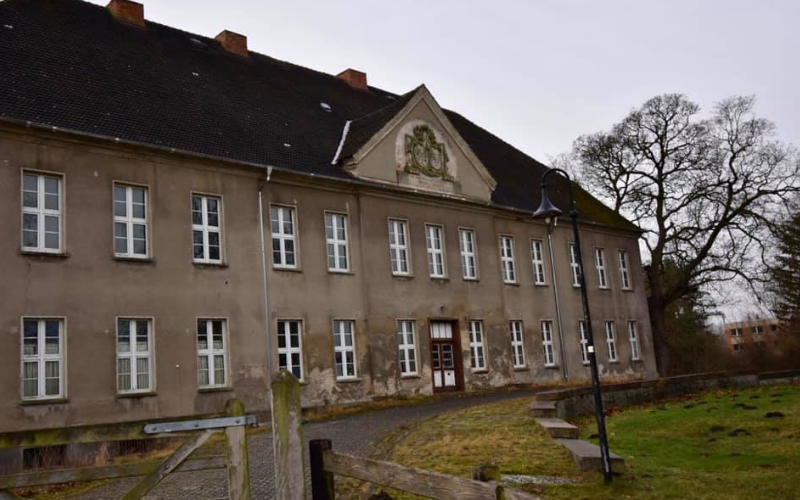
The name Cölpin is of Slavic origin and translates as “village of the swan” (colpa = swan). The village itself was first officially documented in 1290, but it is to be assumed that is was established even earlier than that. From 1480 to 1945 the estate was, apart from a few exceptions over the centuries, in the possession of the von Dewitz family. The municipal coat of arms symbolises the Slavic roots of the name as well as the legacy of the von Dewitz, who have always been irrevocably connected to the place.
The once sprawling estate still contains numerous now crumbling buildings in dire need of repair (Inspectors’ house, stables, wheelwright, smithy, stores and various other outbuildings). Originally built by Minister of State Stephan Werner von Dewitz (1726-1800), lord over Cölpin, Roggenhagen and Brunn, the house was completed in 1786. The two-storeyed late baroque plaster building is spanned in the median risalit by a mighty triangular gable, crowned by the alliance coat-of-arms of the von Dewitz and the von Bülow families under a hipped roof.
The park belonging to the estate was designed by renowned Prussian landscape architect and artist Peter Joseph Lenné (1789-1866). Two historical bridges dating from that time still survive.
After expropriation in 1945, the house was consecutively used as a refugee accommodation, a school, a restaurant and in more recent history the Johanniter accident assistance. In 2008 it was sold to a Dutch stud farm, but according to recent internet searches, the property with its more than 2000 square metres of living spaces along with its spacious outdoor facilities is again for sale.
The fieldstone church dates back to after 1350 and in 1792 was rebuilt in the baroque style by Werner von Dewitz to suit the taste of the time. To this day, the von Dewitz still feel deeply connected to their ancestral home. In 1993, Lothar von Dewitz founded the “Förderverein Cölpin, Holzendorf and Krumbeck“, a friends‘ association to promote and fund the re-establishment of the area. Renovation and restoration of ecclesial paintings, altars and church organs in the municipality can be attributed to that financial support.
The ponds in the village are a direct result of historical clay extraction, at the end of the 19th century, however, after the earth stopped yielding, the brick makers relocated to neighbouring Woldegk, Zinzow and Hagenow to continue their production there.
